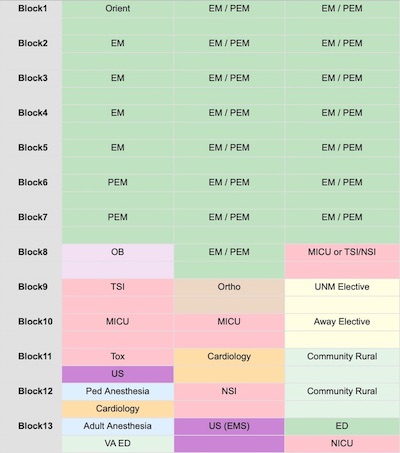Rotation Curriculum

| HO1 | HO2 | HO3 |
|---|---|---|
|
|
|
Roles in the ED
All patient airways are managed by the Emergency Medicine team. Anesthesia, ENT or Trauma Surgery back up is available at the discretion of the EM team. Chest tubes on Trauma activated patients are placed either by the Trauma team or the Emergency Medicine team depending on the condition of the patient and experience of the residents involved. All chest tubes for non-Trauma active patients or medical patients are placed by the Emergency Medicine team.
A dedicated Resuscitation team is scheduled every weekday evening to focus on the most critically ill and injured patients and allow the rest of the department to function smoothly. The team is made up of an attending, senior resident, and in the second half of the year, an intern.
All interns in the Emergency Department are treated equally in terms of schedule, responsibilities and authority. Interns generally see one patient at a time, present to the attending immediately, and develop a plan of care. They respond to resuscitations with their team to help develop the skills needed for the transition to the second year.
HO2 residents are senior residents in the department. They are working on multitasking and management skills with guidance from the faculty. They are expected to manage several patients simultaneously, hone their resuscitation and procedural skills, and begin developing their situational awareness within the department.
HO3 residents in Emergency Medicine should begin to take more of a role in managing the ED while still having primary responsibility for a wide variety of patients in the ED. The HO3s help the attending triage incoming ambulances, triage patients to monitored beds, facilitate flow of patients in the ED and supervise procedures being done by more junior residents. HO3 residents are also expected to help to integrate EM interns into patient care in the trauma/resuscitation areas. This is an opportunity to develop critical bedside teaching skills. To further facilitate HO3s supervising and teaching skills, each resident is scheduled for teaching shifts when they do not see their own patients but focus instead on teaching students and interns.
Curriculum
